The Art Collector asked Dominican artist and architect Lidia León’s several questions ahead of her major art installation, CONEXIÓN, in Central London.
This art installation, in partnership with the Embassy of the Dominican Republic, will see the transformation of St Mary le Strand in Aldwych.
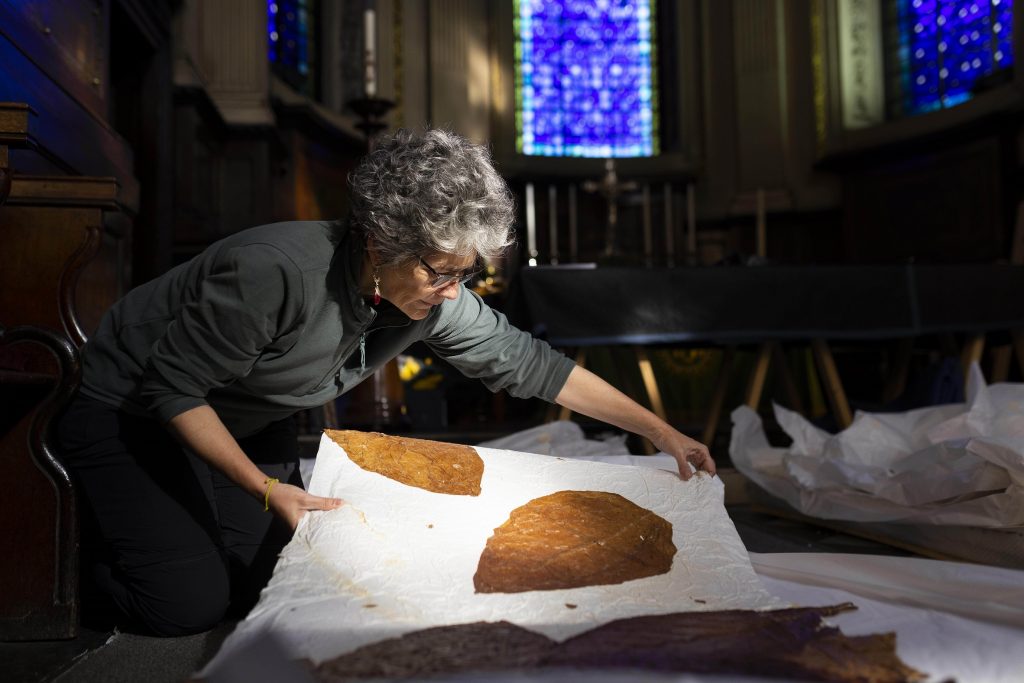
TAC: Can you tell us about CONEXIÓN – the genesis of this collaboration and its symbolic significance (both within a church and within the arts).
Since my childhood, nature has been my inspiration; long periods of silence have sharpened my senses allowing me to discover what is beyond a simple glance. It was in 2016 when I first encountered the Japanese philosophy Wabi Sabi, – ever since it has influenced my work as an artist. Andrew Juniper defines Wabi-Sabi as “an intuitive appreciation of ephemeral beauty in the physical world that reflects the irreversible flow of life in the spiritual world.” (1)
Through art I discovered the bridge between nature, science and spirituality. Art fades away the boundaries of time and space, evoking endless connections into the present. CONEXIÓN is part of my “Wabi Sabi” series and has personally deepened my family and spiritual roots. I was raised in a family of tobacco farmers. While caressing the tobacco leaves with gel, their aroma and “honey” awoke the stories of my grandfather in the field. Witnessing the nature of decomposition and the transformation processes of matter, I discovered the ephemeral substance, which we are made of; I connected this with my origins, the earth. “Our bodies will return to the dust of the earth, and the breath of life will go back to God, who gave it to us.” Ecclesiastes 12;7 (2)
CONEXIÓN was conceived during 2020, for the 17th International Architecture Biennale, 2021, motivated by curator Hashim Sarkis’s question “How will we live together?” The art critic, Roberta Semeraro suggested I represent my country at the Biennale, after having the experience of working together on my first exhibition in Europe, “Te Veo, Me Veo” in 2019. As she states: “the collective space is a fundamental point of LiLeón’s research”; that’s how CONEXIÓN was born.
CONEXIÓN shares the diversity of our culture, through the colours, aromas, and textures of tobaccos leaves. Using the collage technique, I was able to present the power and beauty of unity, in spite of the fragility of a simple piece of leaf. Together is how we are able to live a better and healthier life.
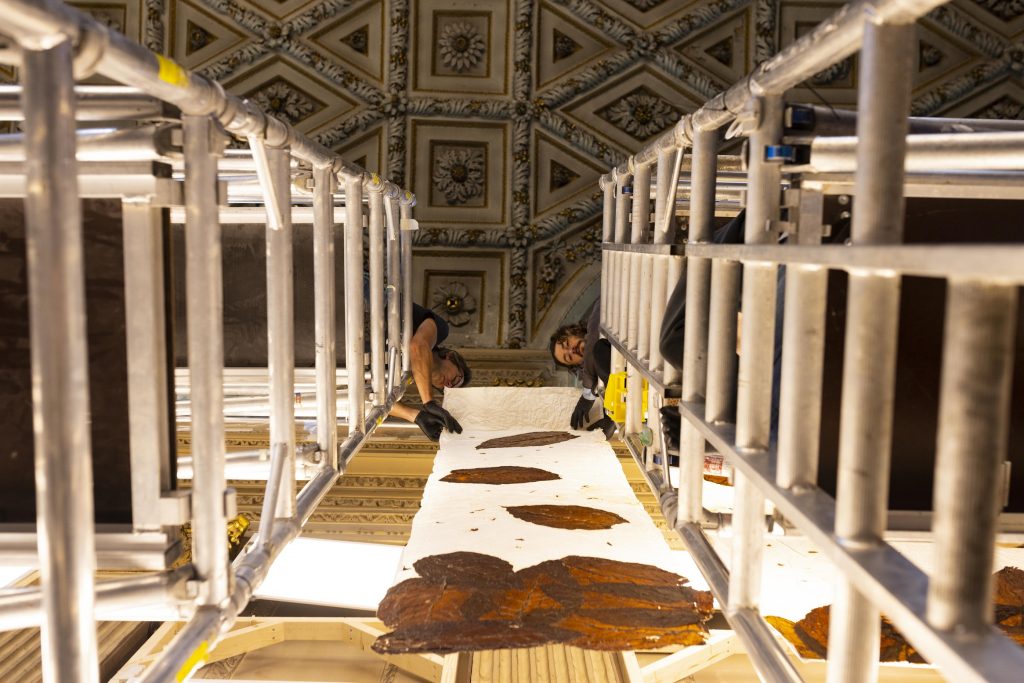
The Dominican Republic pavilion offered dialogues with professionals of different disciplines –architects, lawyers, urbanites, tourism specialists, artists, sociologists, students, ordinary citizens… These conversations, debates and reflections on the ethics of coexistence, urban planning and habitat, culture and heritage, tourism and sustainability… were collected on a series of videos produced by Mario García Haya, available in LiLeón.live youtube channel. These dialogues took place during the Architecture Biennale, 2021, in several sites in the Dominican Republic, Madrid, Spain and Venice, Italy.
This was first presented at the 17th International Architecture Biennale Exhibition in Venice in 2021; has the re-imagination of this installation changed significantly?
CONEXIÓN travels to the UK thanks to the link between the two Anglican Churches: St George’s in Venice and St Mary Le Strand in London. We were helped by the curator, Roberta Semeraro, Minister Counselor of Cultural Affairs from Dominican Republic Embassy in UK, Ligia Reid, Reverend Canon Dr. Peter Babington and the members of LiLeón Foundation.
London offers the opportunity to refresh CONEXIÓN’s invitation to heal ourselves and our relationship with planet earth in order to live in harmony, if we are to survive as a species. St Mary gives a more intimate experience to reconnect with life’s impermanence and imperfection. It will be interesting to see how visitors embrace the Wabi Sabi experience.
“CONEXIÓN is an installation that will write its own history, as each visitor will find and share their own connection with it.” Roberta Semeraro
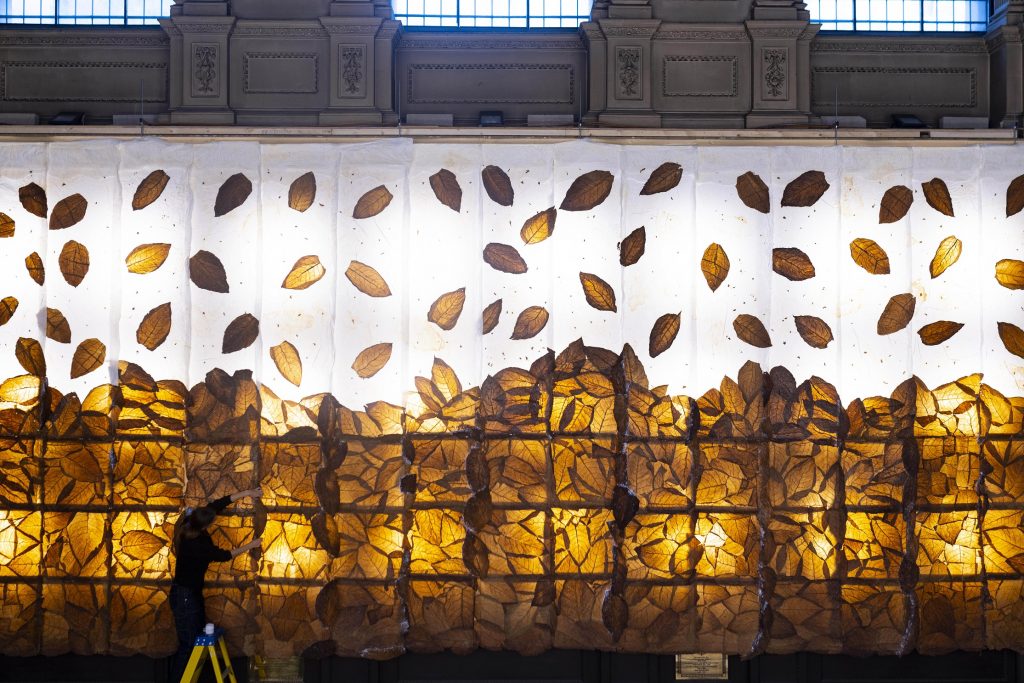
Your installation has been described as “an invitation to look at collective spaces as a common good, a single living organism to be respected and passed on to future generations.” How do you believe:
– your installation achieves this
– contemporary art achieves this
In my case, art is a portal that leads me to my origin, allows me to recognize where I come from; a return home: mother earth. Art reveals the essence and beauty of our existence.
I believe architecture has the power to transform our relationship with our surroundings for a better coexistence. CONEXIÓN invites us to rediscover the purpose of architecture and does so by presenting a space in which we can see ourselves reflected in different ways: integrating diversity; accepting impermanence, the beauty of the imperfect; celebrating Wabi Sabi and our bond with mother nature and the roots of our own ancestry.
Connecting with creative energy we recognize ourselves as part of creation. We are mother earth; if we take care of her, the universe takes care of us. “When we recognize the virtues, the talent, the beauty of Mother Earth, something is born in us, some kind of connection.” (3) This awareness can be achievable at different levels depending on the process of each person; the purpose of CONEXIÓN is to invite and motivate visitors to have their own experience.
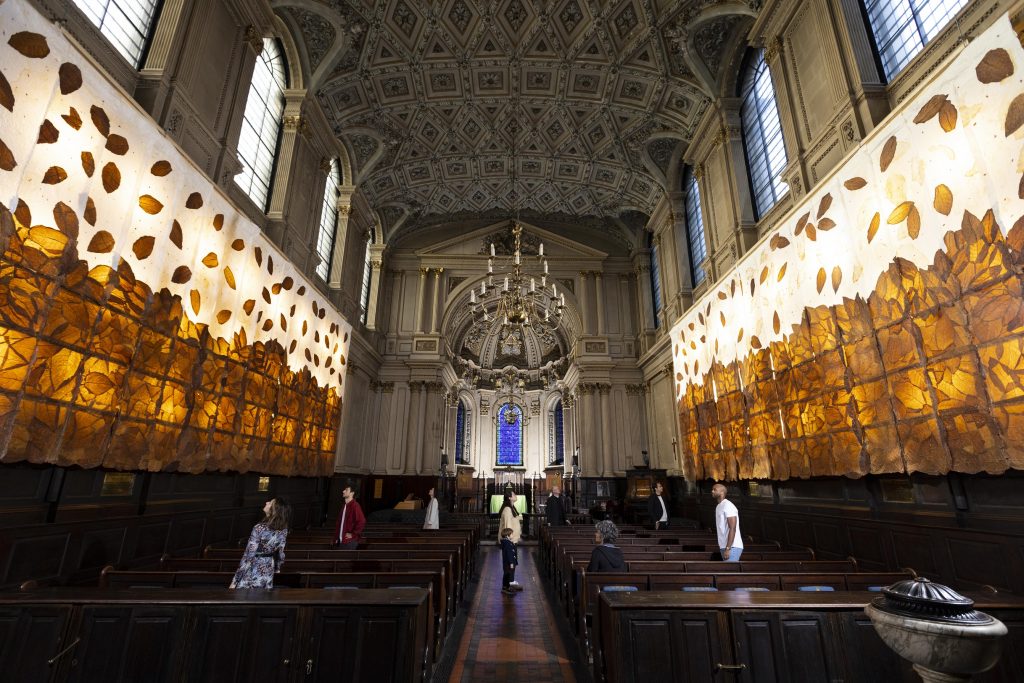
As a follow up, how much of contemporary art will have staying power? (How, too, will it be relevant to future generations?)
From my personal point of view, creative energy is one that connects with the grace of divine, classifying it just makes it easier to study art history. Each generation will integrate their experience and make their own contribution to evolution. The contribution of today’s art is to be genuinely authentic; the challenge is to be so while maintaining the sense of community and common good.
“As the only social right, the artist has to tell the truth, however dangerous it may be. He has the commitment of sowing, not the privilege of harvesting…. The artist’s task is to cause flight, to encourage humanity, to open all the windows.” Facundo Cabral (4)
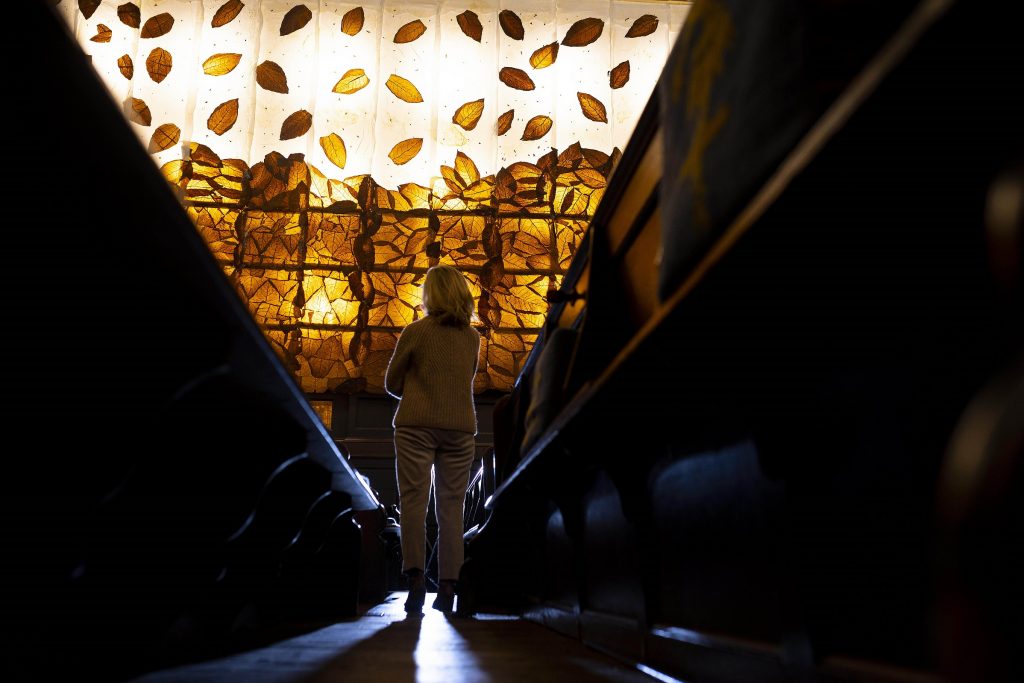
Coexistence is a fundamental theme for you, could you say your work explores the dichotomy between man and nature? To what extent should art reflect the climate crisis of this generation?
I may say my work reaffirms that I reflect a collective reality greater than my own. It reveals that we are interconnected, like drops of the same ocean. It stimulates visitors to discover what is beyond a simple glance, bringing humans and nature in communication. Climate crisis is a reflection of human crisis and art will always express our own evolution.
CONEXIÓN by LiLeón
St. Mary Le Strand, London
15th October – 11th December 2022
Frieze Preview Days: 10th – 14th October
Opening Event: Saturday 15th October 2022, 5 p.m.
1- https://feednflow.com/blog/post/wabi-sabi-an-invitation-to-see-the-beauty-of-life-with-all-its-imperfections
2- https://www.biblestudytools.com/gnt/ecclesiastes/12-7.html
3- Thich Nhat Hana
Zen master, spiritual leader, poet, activist. Revered around the world for his pioneering teachings on mindfulness, a global ethic, and peace. https://plumvillage.org/en/thich-nhat-hanh/
4- Facundo Cabral
https://www.buenastareas.com/ensayos/Monologo/32489947.html


 Saving...
Saving...
1 Comment
Add Yours[…] The Art Collector […]